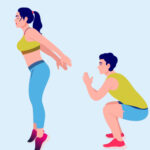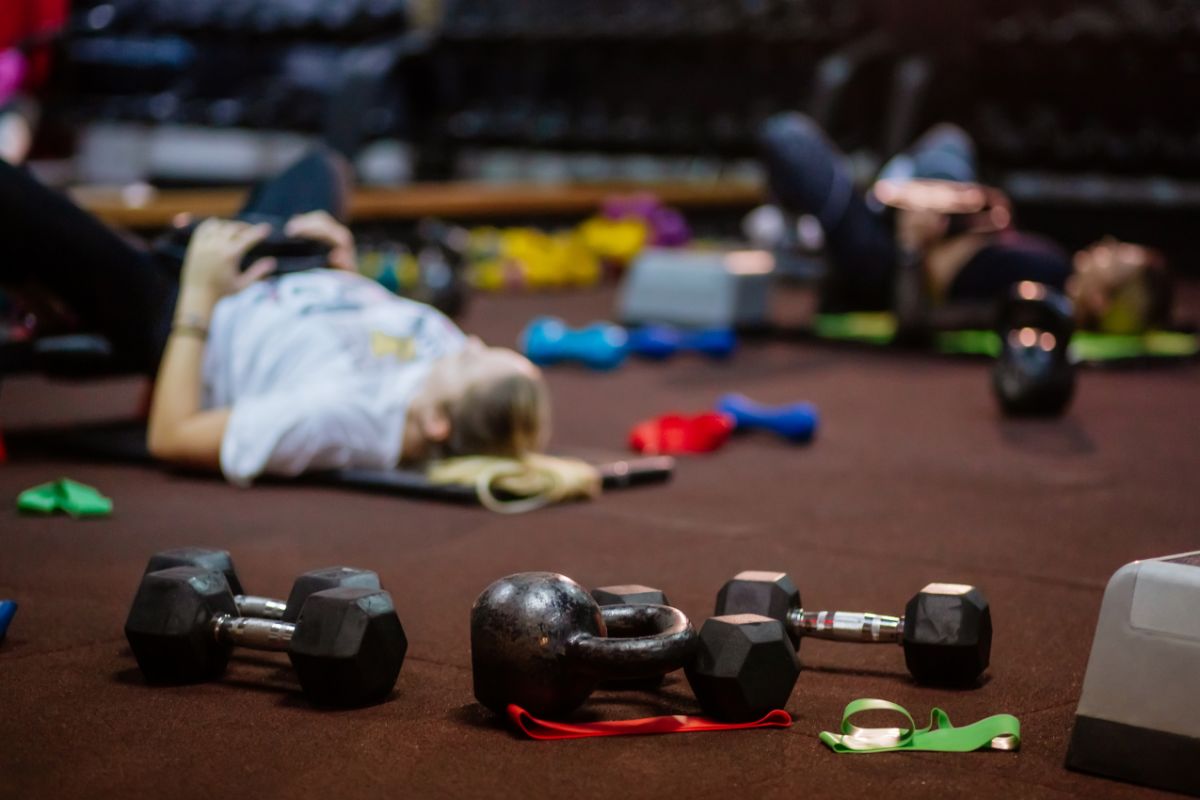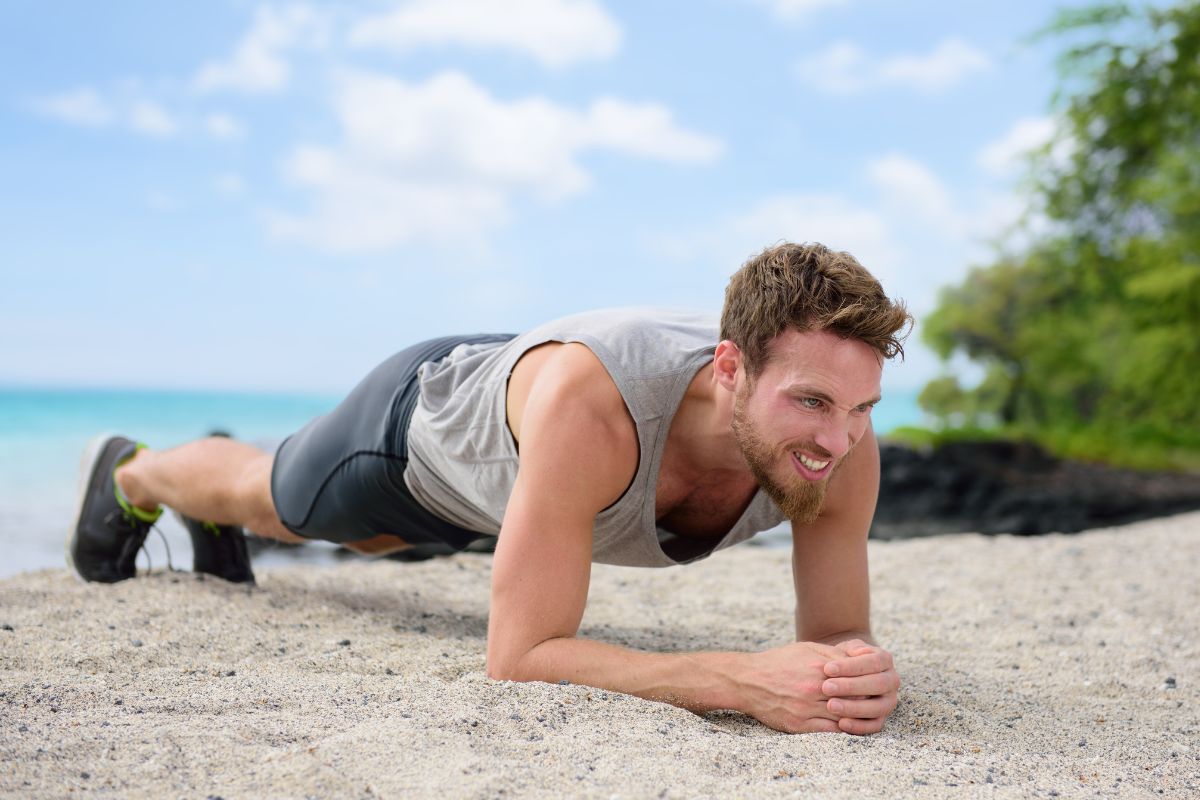Last Updated on September 13, 2022 by TJ Daniels, Certified Personal Trainer
You are not always going to have weights at your beck and call. Whether this is because your gym is closed, you’re going on vacation, or the weight rack is currently occupied.
When weights aren’t available, you’re going to need to get creative in your workout routines with some weight-free options.


Luckily, you can achieve all your chest goals by performing simple push-ups. While this isn’t as fun or exciting as reps of dumbbell flyers or intense bench press sets – they will help you build size and strength when weights aren’t an option.
With this guide, we explore 6 different chest exercises that you can achieve without weights.
What Are The Best Chest Exercises Without Weights?
- Push-Ups
- Plyometric Push-Ups
- Scapular Push-Ups
- Close-Grip Push-Ups
- TRX Chest Fly
- Dips
1. Push-Ups
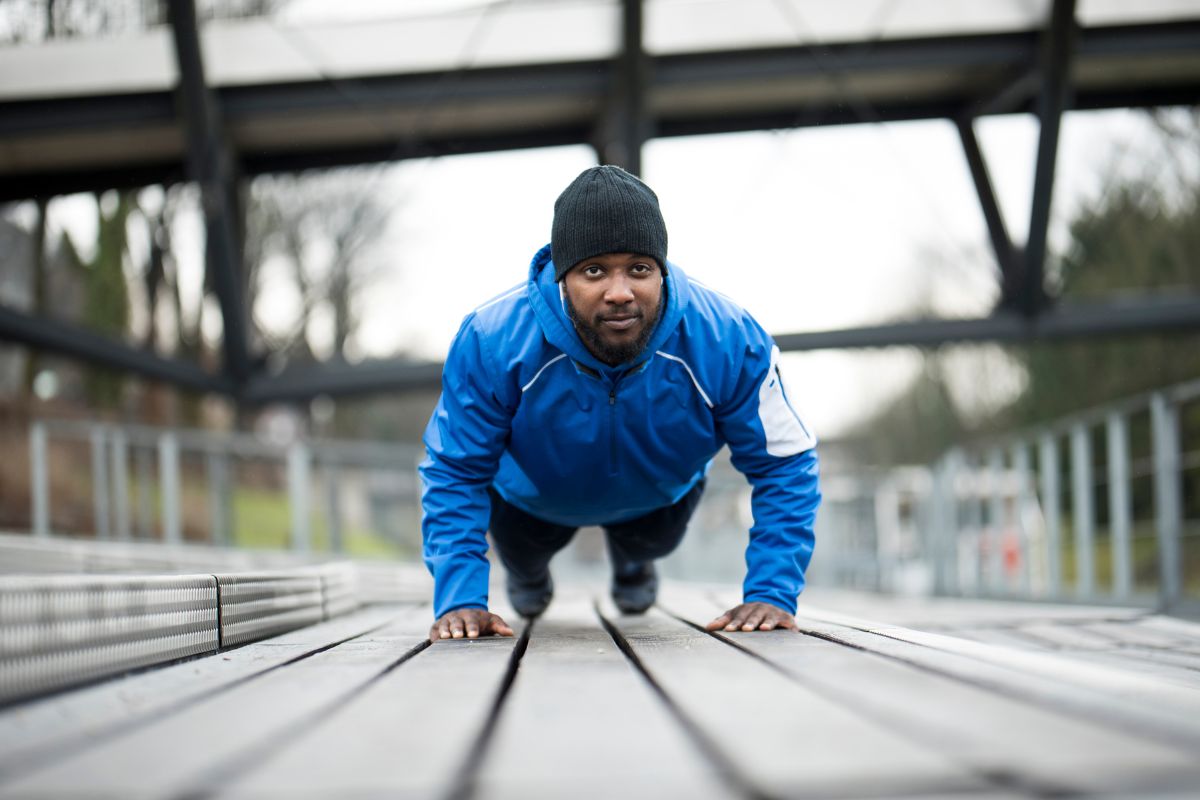

A push-up is a universally standard bodyweight exercise used for chest training.
Depending on your personal requirements, the exercise can be adjusted or altered to suit whatever level you are at – suitable for both professional and regular athletes. Essentially, a push-up is a plank, but in motion.
What Are The Benefits Of Push-Ups?
- Great for strengthening triceps and chest.
- Unlike a bench press, it provides a more full-body workout.
- Modify the exercise to suit your level of fitness.
How To Do Push-Ups
To complete a push-up, position yourself on the floor on your hands and knees, with your hands marginally wider than shoulder-width apart.
Then straighten both your legs and arms, so your hands and toes are supporting your weight, and keep your spine neutral by engaging your glutes.
Use your arms to push down your body until your chest is slightly away from the floor, wait for a second, then push back up in the original position.
2. Plyometric Push-Up


Similar to a regular push-up, however; the plyometric push-up is a more advanced version, requiring potent strength and mighty power output.
This is a great exercise for people looking to grow their muscles as this exercise directly focuses on the fast-twitching muscle fibers within the chest – ones that are not generally fully utilized.
What Are The Benefits Of Plyometric Push-Ups?
- Focuses on the fast-twitching muscles in the chest, providing great growth potential.
- Develops upon upper body strength and power.
How To Do A Plyometric Push-Up
One of the most familiar variations of the plyometric push-up is called the clapping push-up.
While it’s known as a ‘clapping’ push-up, there really isn’t a need to clap. Not only is this unnecessary, but it can be potentially dangerous, too. Instead, all you need to do is perform a regular push-up but with additional explosiveness.
However, this time, with more force that at the top of the movement your hands leave the ground – making sure to land back on the floor with control.
3. Scapular Push-Up
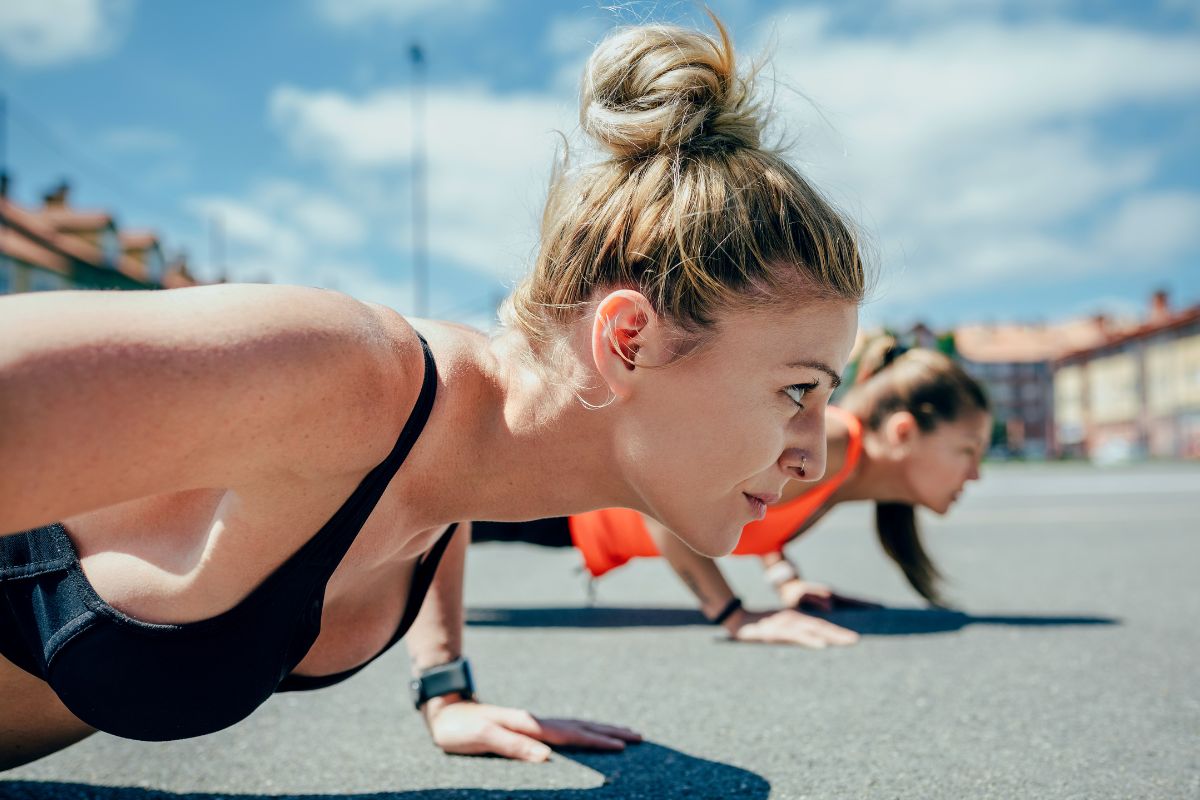

This is a slightly different way of doing a push-up. The scapular push-up requires you to get in the typical position, however, you have to protract and retract your shoulder blades.
This is a great posture exercise where you are strengthening the stabilizers located in your shoulders. While this is more of a mobility exercise rather than an intense workout, it makes a great pre-workout warm-up.
What Are The Benefits Of The Scapular Push-Up?
- Develops lockout strength for performing barbell bench presses.
- Provides both beginner and advanced lifter muscle-building benefits due to its versatility.
How To Do A Scapular Push-up?
Position yourself on your hands and knees with your hands marginally wider than shoulder-width apart.
Straightening your legs and arms so all your weight is on your hands and toes while engaging your glutes to maintain a natural spine.
Keep your arms locked straight while squeezing your shoulder blades together with your chest dipping towards the ground. When your shoulder blades meet, reverse the movement by rounding your back.
4. Close-Grip Push-Up
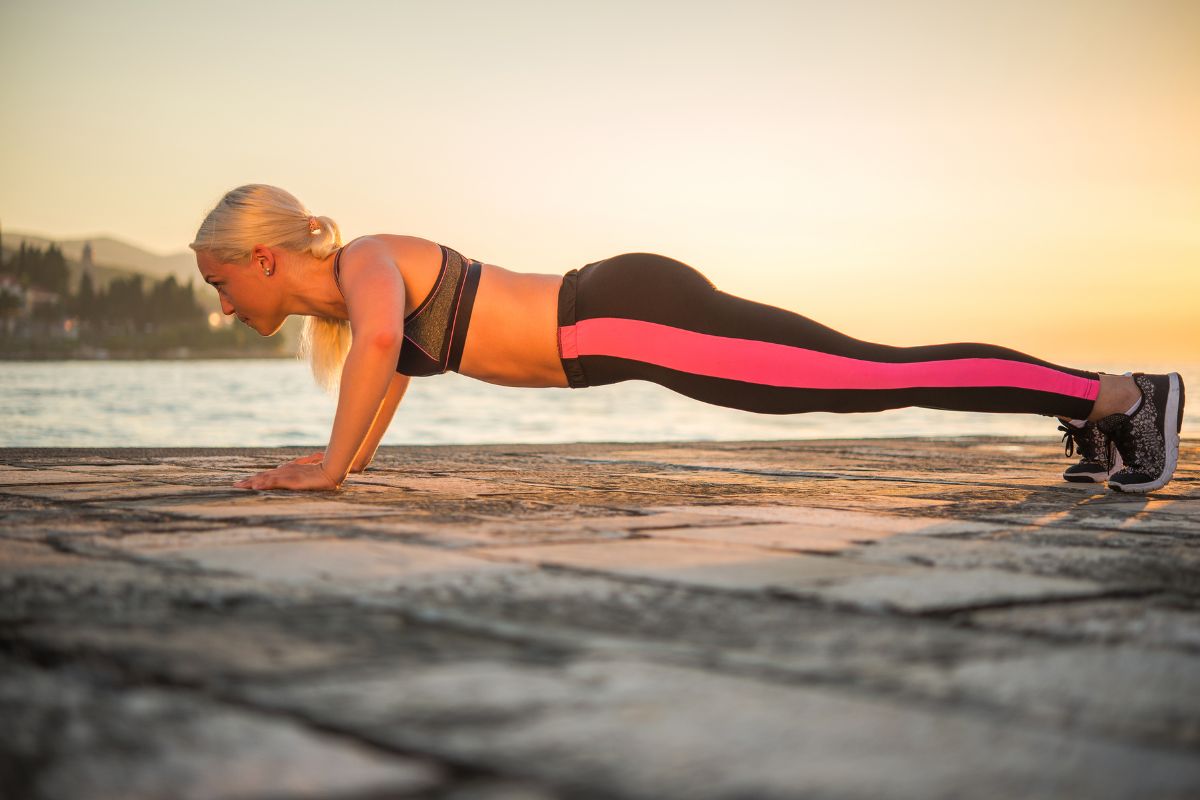

If you’re looking to train the inner muscle fibers of your chest or build strength within your triceps, then the close-grip push-ups would be perfect for you.
Similar to the close-grip bench press, you’ll be simultaneously strengthening your chest and the anterior deltoids by targeting the triceps.
In addition, the narrow case of support further helps to strengthen the core. Here, you can adjust your hand positioning to reduce any strain you may feel on your anterior deltoid.
What Are The Benefits Of Close–Grip Push-Ups?
- Great for strength and triceps hypertrophy.
- Helps to develop lockout strength for overhead presses and bench.
How To Do A Close-Grip Push-Up?
Get into a position where your hands are underneath the shoulders, keeping in mind you can play around and adjust your hand position to find out what feels the best for you. Just make sure you are keeping your hands as close together as possible.
Move into a rigid front plank stance and perform the push-up slowly, keeping your glutes and core tight to maintain rigidity.
To maximize this workout, keep your elbows tucked tightly along your ribcage, making sure not to flair them in or out.
5. TRX Chest Flye


If you’re looking to replicate chest flyers on a cable machine, then this would be a great movement for you.
While it isn’t weighted, due to the unstable suspension straps with the angle of the fly, it adds together to make a more challenging fly option.
If you don’t have a suspension trainer, place your hands in socks (while in push-up position) and move your arms inwards and outwards.
What Are The Benefits Of The TRX Chest Flye?
- Builds muscular chest.
- Strengthens shoulder stabilizers and core.
- Places more tension on your chest due to instability, making you slow down.
How To Do A TRX Chest Flye?
Keep your feet firmly on the floor, placing your hands in the TRX straps. Start with your hands at the same level as your chest with your arms extended and your palms facing one another.
While maintaining a strong plank position, open your arms in an arc movement while lowering your body, keeping your elbows slightly bent. Then push back up and repeat.
6. Dip


You can practice the dip on a bench, rings, or parallel bars, and if you’re lacking equipment, the corner of a counter at home will work. Just make sure this is a stable and sturdy surface!
The great thing about the dip is that at slightly different angles you can hit different areas of the chest, as opposed to the push-up, helping you gain a more well-rounded tricep and chest development.
What Are The Benefits Of The Dip?
- Improves overhead stability as a result of the triceps helping to steady the elbows while in the overhead position.
- Improves upper body size and mass by working the triceps and chest in tandem.
How To Do The Dip?
Position yourself between the dip bars, taking a firm grip on the bars. Keep your shoulder blades depressed and retracted to engage your upper back.
Squeeze the bars to support your wrists, then press yourself upwards – make sure not to pull yourself backward.
Then, with force, contract your triceps while locking your elbows out and lowering yourself down, then repeat.
Final Thoughts
If you find yourself in a position where weights aren’t available, you no longer need to worry as this trusty guide provides you with all the knowledge you need to complete your chest exercise without any weights – so you never have to miss a chest day again!
- How To Start HIIT Workouts [Beginner’s Guide] - May 18, 2023
- How To Sneak A Workout In While Taking Care Of Your Baby - March 17, 2023
- How To Build Your Chest With Dumbbells [Guide] - February 9, 2023

